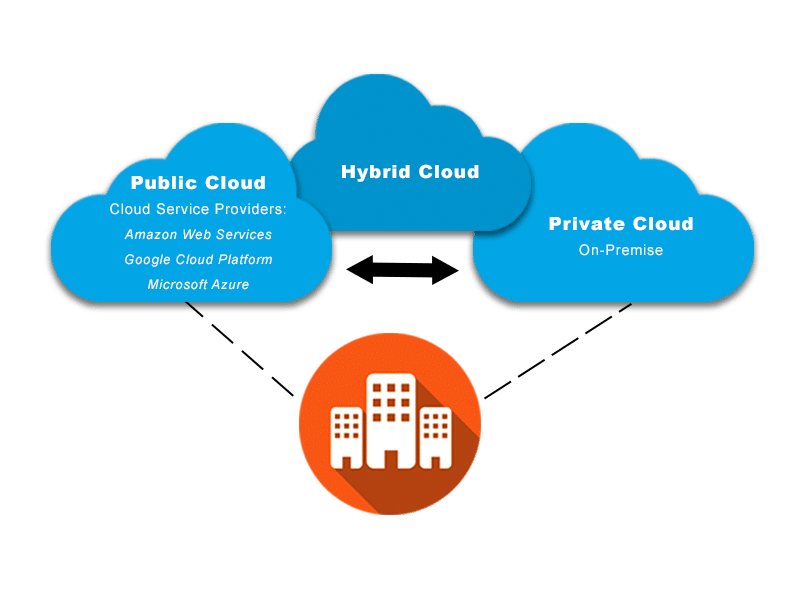Open the Power of Cloud Providers for Seamless Workflow
In today's rapidly developing business landscape, the application of cloud solutions has become a vital component for companies aiming to improve operational performance and flexibility. The capability to effortlessly integrate cloud options into existing infrastructure supplies a myriad of advantages, ranging from improved partnership to enhanced safety actions. By exploring the calculated implementation of cloud migration methods and cost optimization strategies, services can unlock a realm of opportunities that drive development and technology. However, real possibility of cloud services hinges on their capacity to revolutionize traditional operational paradigms and lead the means for a much more dexterous and resistant future.
Benefits of Cloud Solutions
Cloud services use a variety of benefits for companies looking for boosted effectiveness and versatility in their operations. One of the essential advantages is cost-effectiveness, as cloud services get rid of the requirement for companies to invest in pricey equipment and infrastructure. By transferring to the cloud, firms can minimize capital expenditure and pay just for the resources they utilize on a subscription basis. This scalability allows services to quickly readjust their computer sources based on demand, ensuring optimum performance without unnecessary prices.
One more benefit of cloud solutions is increased partnership and ease of access. With data kept in the cloud, workers can access details from anywhere with a web link, promoting seamless partnership amongst employee working remotely or in different places. This accessibility also boosts efficiency and dexterity, as employees can work on tasks in real-time without being connected to a specific physical area.
In addition, cloud solutions provide improved protection measures to safeguard sensitive information. Cloud carriers spend greatly in security methods and technologies to secure information from cyber risks and make sure conformity with market guidelines. This level of security provides businesses with assurance recognizing that their information is secured against potential breaches or data loss cases.
Cloud Migration Approaches
In the process of adopting cloud solutions, businesses must very carefully plan and apply efficient strategies for migrating their operations effortlessly and safely. Cloud migration approaches are important to guarantee a smooth change of information, applications, and refines to the cloud environment. One common technique is the "Raise and Shift" method, where existing systems are transferred as-is to the cloud with very little adjustments. This approach fasts yet may not fully enhance cloud abilities. An additional technique is the "Rehosting" approach, which includes re-platforming applications to make them cloud-compatible. Businesses can additionally select the "Replatforming" technique, where applications are optimized for the cloud environment to utilize its full capacity. The "Refactoring" approach involves upgrading applications to be cloud-native, optimizing scalability and efficiency. Whichever approach is selected, complete preparation, threat analysis, and stakeholder interaction are vital for a successful cloud migration that lines up with company goals.
Enhancing Data Security in the Cloud

Access control devices are also essential in improving data protection. Executing strict gain access to controls ensures that just authorized workers can view, change, or delete delicate information kept in the cloud. Multi-factor authentication includes an extra layer of safety by requiring individuals to provide numerous forms of confirmation before accessing data.
Normal safety and security audits, susceptability assessments, and penetration screening assistance identify prospective weak points in the cloud infrastructure. By constantly keeping an eye on and evaluating safety and security procedures, companies can proactively deal with any type of susceptabilities and ensure a high level of information protection in the cloud.
Optimizing Cloud Expenses
To make certain optimum use of sources, companies need to tactically handle and enhance their expenditure on cloud services. One way to optimize cloud costs is by embracing a pay-as-you-go prices design.
An additional price optimization approach is executing automation for resource monitoring. Automation devices can aid simplify processes, such as scheduling automatic closures during non-business hours or click resources rightsizing instances based upon performance demands. Additionally, leveraging price cuts and booked instances provided by cloud solution suppliers can lead to significant cost savings for long-term usage.
Leveraging Cloud for Remote Work
Cloud services offer exceptional flexibility and efficiency for making it possible for remote work settings. Leveraging the cloud for remote work allows staff members to gain access to business resources and team up from anywhere in the world. By utilizing cloud-based devices such as online desktop computers, video conferencing systems, and record sharing applications, companies can make sure seamless communication and productivity among remote teams.
One of the key benefits of utilizing cloud solutions for remote work is the capacity to scale resources according to the transforming needs of the labor force - universal cloud Service. Whether scaling as much as suit enhanced need or scaling down during slower durations, cloud solutions supply the flexibility to change sources in real-time, check my blog optimizing prices and efficiency
In addition, cloud-based safety actions help safeguard delicate information and ensure conformity with regulations, even when workers are functioning from another location. With integrated encryption, accessibility controls, and surveillance tools, organizations can preserve a secure workplace no matter where their staff members are situated.
Conclusion

Moreover, cloud services offer improved protection procedures to secure sensitive data. Cloud migration strategies are necessary to make sure a smooth transition of data, applications, and refines to the cloud atmosphere.Executing durable safety steps is paramount when guarding data in description cloud environments. Data safety and security in the cloud involves a combination of modern technology, plans, and practices to shield information from unapproved accessibility, breaches, and data loss. By applying cloud movement techniques, boosting data security, maximizing costs, and leveraging the cloud for remote job, organizations can take full advantage of efficiency and price savings while supporting a vibrant workforce.